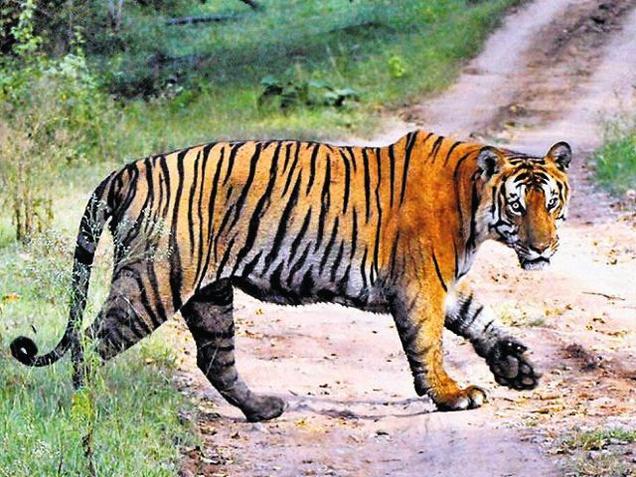By Kushagra Dixit
New Delhi– Eight tigers from India – six females and two males – would be translocated to Cambodia where the big cats have been declared extinct. The Indian tigers would be “re-introduced” in two different locations in Cambodia over the next five years.
“It will take at least five years to reintroduce the Indian tigers and place them in two different, safe enclosed breeding areas,” Sokhun Ty, a senior official of the Cambodian ministry of Agriculture, Forestry and Fisheries, told IANS here.
“The tigers would be re-introduced in the eastern highlands of Mondulkiri Protected forests and the Cardamom Mountains in the western part, that covers one million hectares of area,” Ty, who Secretary of State in the ministry, said. He was here to participate in the the 3rd Asia Ministerial Conference on tiger conservation.

He said his government has begun negotiations with India on the matter.
“We have initiated the process of seeking help from India, though its not formal yet,” Ty said, adding that India has “expressed willingness to support the reintroduction of tigers in Cambodia.” He said the talks had begun at the level of envoys last year.
Elaborating on Cambodia’s plan, Ty said: “Under our national tiger recovery action plan, tigers could be reintroduced in Cambodia from 2016 to 2026, for which about $33 million would be required. We are also taking help of our conservation partners, like World Wide Fund for Nature (WWF), Global Tiger Forum, Global Tiger Index and others”.
According to a recent WWF report “Bringing back Cambodia’s Roar”, the last known tiger in Cambodia was reported in the eastern Mondulkiri province in 2007. Tigers belonging to the breeding population are believed to be functionally extinct. However, Cambodian officials believe it is not true.
“We don’t believe that the tigers have become extinct in Cambodia. In the last five years we confiscated 10 tigers from poachers. They were sent to the zoo. I am sure that in Mondulkiri there must be some tigers, but the number would be very low, and the area is very large,” he added. Cambodian dry forests were once inhabited by the Indochinese tiger.
The WWF report recommends at least eight tigers to be introduced in Cambodian forests, so that after successful breeding the population could rise to 25 over a period of 10 years.
According to Ty, “To make the tiger plan successful, 10 sq km area is required for one tiger with adequate numbers of tiger prey in one sq km.”
Banteng – a wild cattle, Sambar and Muntjac — barking deer, are the key tiger prey in the forests of Cambodia. The report suggests that to sustain tiger growth under the reintroduction plan, the Sambar deer population must be increased to nine per sq km by 2018 — as prey for one tiger. This would work out to 90 Sambar deer in a 10 sq km area for one tiger.
“Tiger prey assessment is also under process,” Ty said.
According to Keo Omaliss, Director, Department of Wildlife and Biodiversity, Cambodia “we still have a long way to go, especially in terms of tiger prey assessment in Cambodian jungles, and to make sure if the Indian tigers could be successfully translocated and reintroduced in the Cambodian forests.”
He said some studies had mentioned that Indian tigers and Cambodian tigers were of the same sub-species, so there would likely be no problem in terms of genetics. “However, there is a big question for us too; so scientists are also working on that aspect as well,” Omaliss told IANS.
As per experts, there are genetic variations between the Asian tigers, which includes the Bengal Tiger, Malayan, Indochinese and Amur aka Siberian tiger. The WWF report finds tigers from India or Nepal best suited for re-introduction as the habitats are similar.
In Combodia, about 60 percent of the forests are under protection and conservation system.
Cambodia lost most of its tigers due to poaching and deforestation. It is now left with vast “tiger-less” bio-reserves, which includes 1,700 sq km of Mondulkiri Protected Forests, 1,500 sq km of Lomphat Wildlife Sanctuary, 2,000 sq km of Seima Protected Forests – a mixed evergreen forest, and 470 sq km of Phnom Nam Lyr Wildlife Sanctuary.
Omaliss added: “First Cambodia has to be ready to stop the poaching and increasing the prey. We need to ensure these factors for promoting enclosure breeding.”
Environment Minister Prakash Javadekar, during the conference on tiger conservation reiterated India’s willingness to help increase the tiger population in countries where there was a low tiger count. (IANS)














